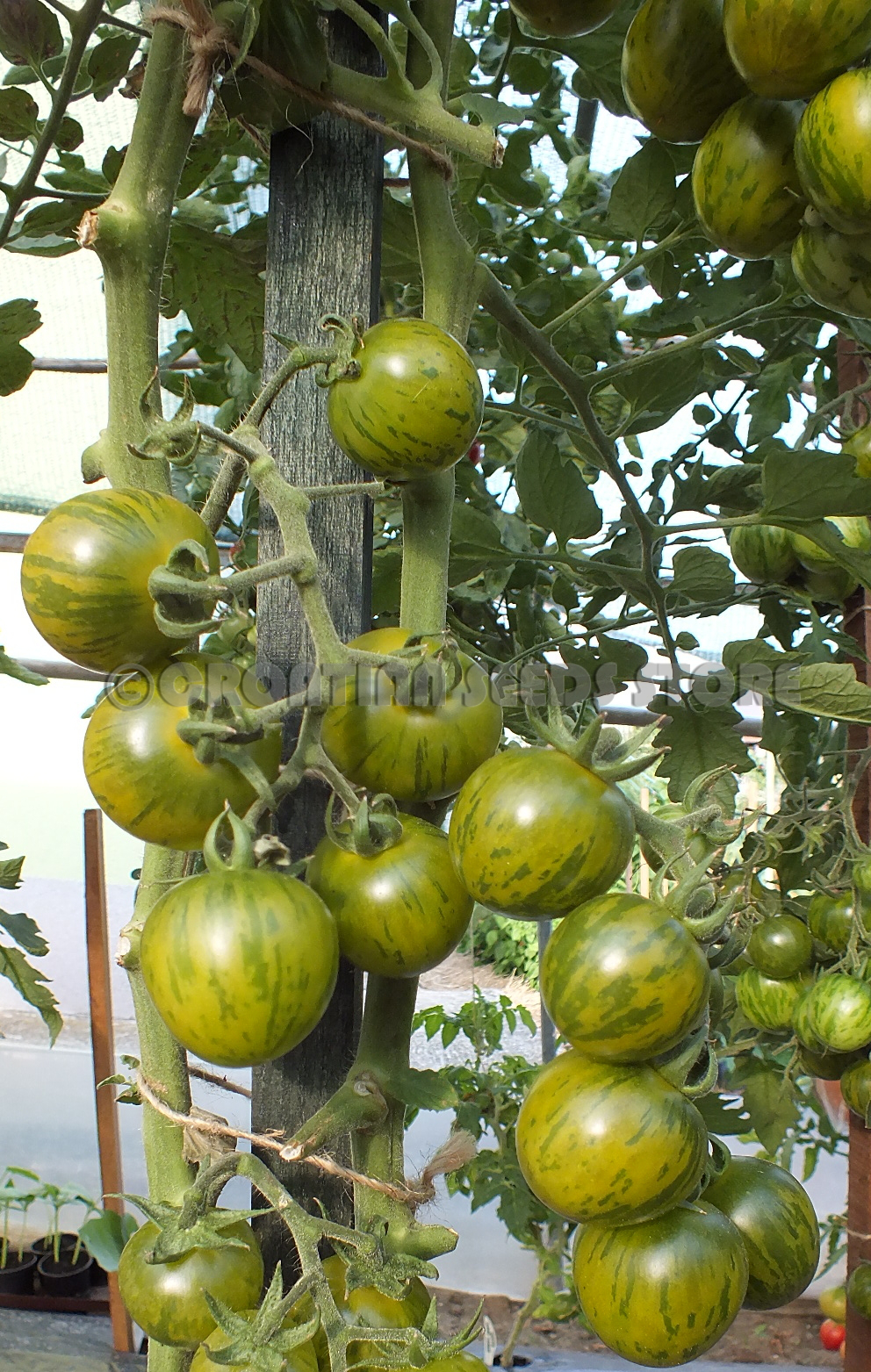
Tomato varieties will produce fruit consistent with the varieties planted. If you are not interested in saving seeds, then you can safely ignore cross-pollination issues. This is commonly referred to as a “cross-pollination” or simply as a “cross.” When cross-pollination occurs, the fruit will look perfectly normal in the current season however, the resulting seeds carry genes from each parent and will produce varying progeny in subsequent generations. If tomato varieties are planted in close proximity, pollen from one variety can land on the female part of a blossom, the stigma, of a different variety and lead to some or all hybrid seeds being formed in that fruit. (Cattle fencing or concrete reinforcing wire mesh work well for this.) Place the cage around plants soon after transplanting and anchor with stakes.

You can purchase tomato cages at your local garden center, or simply bend a 2-meter-long piece of 10- to 15-cm wire mesh into a cylinder about 55 cm in diameter. Growing tomatoes in cages is a good compromise between labor-intensive staking and just letting them sprawl.

As an alternative to using individual stakes, grow several plants in a row between heavy-duty stakes or posts spaced about 1 to 1.5 m apart, and use twine to weave in and out around posts and plants. Start about 20 to 25 cm above the ground and continue to tie at similar intervals as the plant grows. This gives the stem room to expand without being constricted. Tie stems to stake with soft string, twine or cloth, forming a figure-8 with the stem in one loop and the stake in the other. Prune tomatoes to one or two vigorous stems by snapping off “suckers” (stems growing from where leaf stems meet the main stem) when they are 2.5 to 5 cm long. Drive stakes at least 20 to 25 cm deep at or soon after transplanting so as not to damage roots. Wooden tomato stakes are typically about 2 m long and 4 cm thick, but you can use similar materials. Allowing indeterminate varieties to sprawl reduces labor, but takes up more space and plants are more prone to disease. Staked and pruned plants are also more susceptible to blossom end rot and sunscald. Staking and pruning usually reduces total yield, but fruits will tend to be larger. But staking and pruning indeterminate varieties can hasten first harvest by a week or more, improve fruit quality, keep fruit cleaner, and make harvest easier. Determinate varieties do not need staking. How you provide support to plants can also affect performance. Raised beds, black plastic mulch and providing consistent moisture by watering or through drip irrigation are good ways to improve all three. Many factors (in addition to your choice of variety) affect total yield, first harvest and fruit quality. If it rains less than 2.5 cm per week, water to make up the difference. Tomatoes need a consistent supply of moisture. A reflective mulch, such as red plastic that will reflect light, can be help to promote more complete development if light conditions are not ideal. Mulch plants after the soil has warmed up to maintain soil moisture and suppress weeds. Remove covers whenever temperatures exceed 29 C. Use black plastic mulch to warm soil and/or row covers, hot caps or other protection to keep plants warm early in the season. To reduce root disease risk, don’t plant on soils that have recently grown tomatoes, potatoes, peppers or eggplant for at least two years. Roots will form along the buried stem, establishing a stronger root system. Set them in the ground so that the soil level is just below the lowest leaves. Unlike most plants, tomatoes do better if planted deeper than they were grown in containers. Don’t rush to transplant until the weather has stabilized and the soil is warm. This (misshapen, deformed fruit) is caused by incomplete pollination, usually due to cold weather. Transplants exposed to cold temperatures (15 C to 18 C day and 10 C to 15 C night) are more prone to catfacing. Harden off plants before transplanting by reducing water and fertilizer, not by exposing to cold temperatures, which can stress them and stunt growth.

Transplants that are too mature often stall after transplanting while younger, smaller plants pass them by, producing earlier and more fruit. Avoid plants that are tall, leggy, or yellowish, or have started flowering. When considering candidates for transplanting, look for sturdy, short, dark green plants. Wait at least a week or two after the last frost. Cold soil and air temperatures can stress plants. Once the last frost has passed and temperatures do not drop below approximately 10 degrees F at night, you can begin to consider transplanting.


 0 kommentar(er)
0 kommentar(er)
